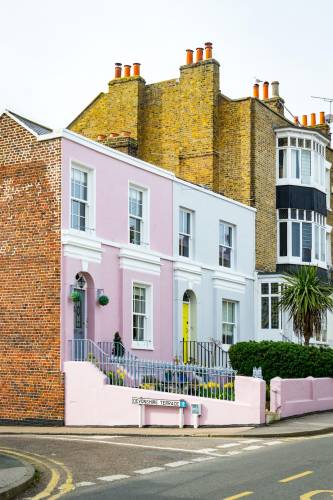Prime Market Update with Nicholas Barnes, Head of Research at Chestertons
With the London property market undergoing huge shifts in the last few months, we speak to Chestertons’ Head of Research Nicholas Barnes and get his insights into the way the Prime market has evolved over the last year, and some key trends for the year ahead.
Chestertons’ Market Report has just been released – a great piece of insight our readers should look at if they haven’t already. What do you feel are the most relevant insights for the prime market at the moment?
If we look back to pre-COVID, the way the market has evolved surprised everyone. When the country went into lockdown, even the most optimistic market observers were thinking the market was going to take a tumble.
For a while it was touch and go in that seven-week period up until the 13th of May, when the government effectively reopened the housing market. But almost immediately thereafter, the leading indicators went off the scale, and there was huge demand. That's apparent in the lettings market as well. Although it has subsided slightly, demand has remained exceptionally high, certainly in comparison to the last five years before 2021.
Government intervention had a lot to do with the way the market performed, because of the stamp duty holiday and the impact of homeworking, which changed people's assessment of what they wanted from their housing.
Two things have arisen from that – there's a shortage of houses for sale, and consequently, prices have risen. Especially, as you can imagine, the value of the ‘best’ houses – best presentation, best location, good outdoor space, etc.
The second thing in terms of market dynamics is that there was a drop off in activity in July. A lot of people said that was entirely down to stamp duty. I don't think so, in the same way that the big increase in demand wasn't entirely down to the stamp duty.
Once you get to the upper mid and higher echelons in the Prime market, we found that Stamp Duty savings weren’t really a deal breaker. I think as much of a driver of demand was the lockdown experience which resulted in a requirement for larger property, especially with outdoor space.

Are there any other factors that contributed to the drop-off in activity in July?
July coincided with the lifting of lockdown restrictions, plus the traditional summer holiday period. Notwithstanding some remaining international travel restrictions, families were able to go away on holiday, either in this country or selectively abroad. This is substantiated by the fact that we saw demand rise quite strongly in Prime markets in August and September, as people came back from holidays.
A drop off is to be expected, as the level of transactions that had been taking place was completely unsustainable – not just in London, but nationally. There is also a distinct shortage of available stock constraining the number of deals that are getting across the line. But there’s still plenty of unsatisfied demand out there, although a lot of people will now be waiting until the New Year.
There’s also a lot of uncertainty about other things which will impact the market. The most immediately relevant factor is whether there will be an interest rate rise. Again, I don’t think that will have too much of an impact on the market as a whole (depending on how much rates increase), although it may have more of an impact on the Prime market where mortgage loans are likely to be larger. Further down the line, I can foresee the Bank Rate being nearer to 2%, particularly if inflation continues to rise and the economy continues to recover.
Another consideration is the concern about COVID. There is still a lot of uncertainty, and we don’t know what’s going to happen in future with regard to new variants. At the beginning of 2021, we found a number of people were keen to move into a bigger property before restrictions were imposed again.
The other unknown factor is Brexit fallout. Recent supply chain issues have led to increased demand for turnkey properties, with a number of clients unable to get hold of a builder in a reasonable time frame for properties requiring refurbishment. And these properties will command the best prices – we’re seeing competitive bidding, multiple offers, and the asking price being achieved and exceeded in many cases. On the flip side, smaller properties, particularly small apartments, are struggling. There is demand for them, and they will sell, but pricing is much more sensitive on those properties.

Looking forward, what are the big picture trends for Prime London locations?
Generally, we’ve seen in a number of prime locations prices catching up to, or slightly ahead of pre-pandemic levels. I think there’s scope for further increases next year. A key factor, particularly in central London, will be international buyers, who traditionally drive the market in locations such as Knightsbridge, Kensington and Mayfair.
In the rental market, there was a huge drop in rents of around 20-30% in 2020 in some locations. Many smaller landlords were looking to sell their properties as a result, although rents have risen again this year and very sharply since the summer. This is largely due to resurgent corporate demand, with people returning to the office, and also international students, who make up a large part of the Prime rental market in London.
We’ve had an astonishing 18 months, with an almost once in a lifetime set of circumstances, but I believe that we’re going to return to a more normal market in 2022. I think prices will continue to rise, although transaction numbers may be lower simply because of lack of stock. Provided we don’t have too much turbulence from issues not directly related to property, such as inflation, interest rates and COVID, I think we’re in for a steady year in the prime sales market in London.

















